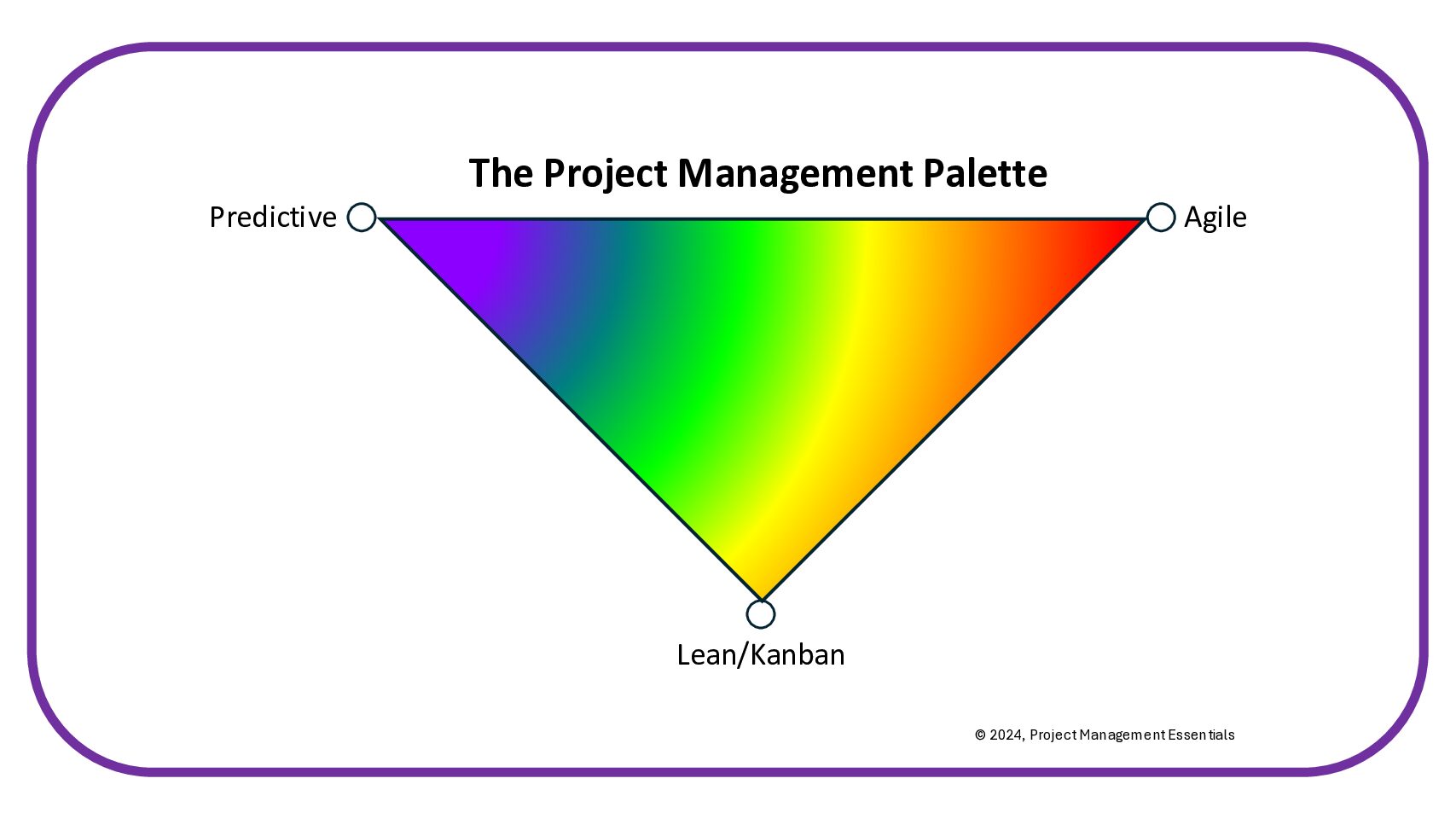Hybrid projects are not constrained by a single methodology or well-defined framework. By definition, they are a melding melding of practices. A huge responsibility accompanies this unbounded freedom of choice. Project managers must clearly describe how the project will be executed to be successful.
Shirking this responsibility is detrimental. Research demonstrates that maturity and consistency improve project outcomes. Without any process, we invite chaos.
Hundreds of options and decision points need to be considered when describing the project management or execution plan. The Disciplined Agile Toolkit describes over 150 decisions (options) for organizing and executing a project. Capterra lists over 1500 project management software tools.
Hybrid project managers must plan intentionally. This article identifies some foundational practices that should be employed on every project. The instantiation of these practices will be tailored to the project’s context.
Charter the Project
Contents
The project charter sets the operating agreement. It establishes the initial expectations and understandings between the stakeholders and the project team. It documents the objectives, high-level requirements and constraints, the project manager’s role, and many other components. The level of formality and components will be based on organizational and project requirements.
Creating alignment and agreement among project stakeholders can be challenging. The chartering process establishes a forum for surfacing and addressing conflicts and misaligned interests, minimizing delays and preventing the need for rework later on.
Create a Management Plan
The project management plan documents how the project will be executed. It should be tailored to the project’s context. A well-defined project management plan is crucial for hybrid projects since an operational standard does not exist.
The plan sets expectations and builds understanding within the project team. It defines and describes roles, responsibilities, and processes. The format and level of detail should be tailored to the project’s context. A good plan increases the likelihood of project success and reduces inefficiencies and conflict.
Define the Scope and Build the Schedule
The two most critical planning elements are defining what will be delivered (scope) and when (schedule). Without this, projects flounder like a rudderless ship. The project type and operating environment influence which practices and tools are used.
Traditional projects have detailed specifications, generally use a Gantt-based schedule, and have a rigorous change management process.
Agile projects have an emergent scope. Features and user stories are documented and prioritized on the product backlog. Functionality is delivered in short, often 2-week iterations. Teams use a Kanban board to manage the flow of work.
Hybrid projects are free to define their own planning practices. They may follow the general contours of traditional or agile, combine best practices, such as the Milestone-Kanban technique, or follow a bespoke process.
Simple projects may only need a high-level roadmap and a checklist to keep the team coordinated and the project on track.
Visualize the Work
Projects are complex endeavors that generate a plethora of data. Correlating, comprehending, and making informed decisions can be challenging. Despite our best intentions, we often overlook or fail to notice early warning signs.
People are visual. We recognize graphical patterns quickly. Visual project management tools significantly enhance the project manager and team’s ability to comprehend the project, its progress, and its challenges. These tools can be sophisticated, but often simpler is better.
Roadmaps, Kanban boards, and dashboards are easy to use and convey valuable information quickly. Physical versions of these tools made with painter’s tape and sticky notes on the wall are easy to build and adjust. Collaborative tools can be used for virtual teams and promote transparency, accountability, and collaboration.
Manage Risks, Actions & Issues
Proactively managing risks, actions, and issues is a fundamental activity. The project manager must regularly survey the environment, log, track, and address open items. There should be regular cadence and process at the team and management levels, with clear ownership and accountability. This ensures the project team does not overlook or forget critical items that could derail the project.
The detail and depth of these practices should be tailored to the project’s needs. The most basic tool can be a simple spreadsheet. More sophisticated applications can integrate and prioritize items across multiple workstreams, create dashboard reports, and provide alerts.
Embrace Continuous Improvement
There is no single “right way” to manage all projects. Projects are living organisms. Processes and practices must adapt and embrace continuous improvement as the team and their organizations mature and adjust to external business events.
All projects should adopt a version of the Agile team retrospective. Regularly, the team reviews its performance, identifies improvements, and implements them. Then, the team confirms the changes have been beneficial.
Lean Out the Process
All large organizations have waste. There are excessive delays, hand-offs, and unnecessary work. If we want to improve, we must make it easier for our teams to deliver value and solutions more quickly.
Our enterprise processes and formal standards are often designed to solve past problems. Patches and bandaids were haphazardly applied to address immediate concerns rather than using systems thinking and envisioning a better way of doing business.
Change the processes! Critically review what you do. Do the processes add value? If not, eliminate them. If they are required, make them less burdensome.
Empower the Team
Empowered teams excel at solving complex problems. Teams produce better outcomes than individuals alone. Multiple perspectives are considered and integrated into the solution. Unlocking the creative power of motivated and engaged teams is fantastic.
We create empowered teams by pushing decision-making to the lowest responsible level. Those closest to the work know the process the best and are closest to the information. When they make their own decisions, they are responsible and accountable.
Empowerment is easier said than done. It often requires resetting the team and enterprise culture, norms, and standards. Micromanagement needs to be replaced with a best-intention and coaching mindset. When we punish mistakes, they do not stop. They become hidden, and the impact becomes worse.
Have Consistent and Repeatable Processes
Do not drive for standardization. Projects are unique. We are not producing widgets. Strive for consistency and repeatability. Develop and continually refine context-sensitive project management practices that allow for customization. Build delivery patterns that promote efficiency, sustainability, and repeatability.
© 2024, Alan Zucker; Project Management Essentials, LLC
See related articles:
- The Project Charter Lays the Foundation
- Unlock the Power of the Project Management Plan
- Hybrid Project Management: Part 1, What is Hybrid?
- Hybrid Project Management: Part 3, Picking the Approach
To learn more about our training and consulting services or subscribe to our newsletter, visit our website: https://www.pmessentials.us/.

